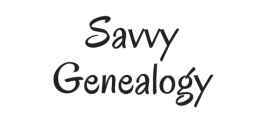How Old Christmas Traditions can help with Genealogy
Happy Friday everyone! Isn’t it great to know that the weekend is just around the corner? For some of you that means a whole day or two of genealogy research! Yay! I remember the time before my daughter was born when I could research the whole day and not feel guilty at all for doing it. Now, on a good day, I have until she gets home from school.
Anyway, have you ever wondered what your ancestors did for the holidays? What food did they eat, what rituals did they do, and what was important to them? How different were the traditions from the 1800s to today? I will discuss Norway and Denmark traditions in this post and then next Friday I will discuss Sweden and Finland.
In Norway and Denmark today, we see Christmas gnomes, paper garlands, various butter cookies, opening gifts on Christmas Eve instead of Christmas Day, etc. Many people decorate their Christmas trees the day before Christmas Eve. They have the big feast on Christmas Eve and save the smaller dinners for Christmas Day and beyond. They might have Santa Claus in some areas of the country; however, the Christmas Goat gives out more presents. They have wonderful Christmas markets all over Norway that help bring in the light, hope, and cheer during some of the darkest days.
If you want to enjoy some of these traditions, then just Google it and you’ll get some awesome blogs about how to incorporate them into your traditions.
Just for fun and to understand our ancestors better, let’s look at the past and some of the Christmas traditions that have fallen by the wayside.
Norway
1. The Sharing of a Julenek
A Julenek is a bundle of grain on a pole that was left outside leaning against the barn as a Christmas gift for the birds. It was a farmer’s way of being hospitable during the holidays. Research shows that some priests during the 1700s denounced this ritual as a pagan holiday. This suggests that this ritual goes back to pre-Christian days. No one knows the origin of this ritual; however, one can still see the influence of the Julenek in works of art. Today it’s a symbol of Christmas generosity.
2. Christmas Brewing
Since Viking times, brewing has been a major part in Norwegian celebrations. King Haakon the Good moved the Jule festival, which is the pagan Winter Solstice festival, to coincide with the new Christian festival during the 10th century.
During this time, he mandated that every peasant brew a batch of beer for the occasion. This was enforced with heavy fines and with the priests going from farm to farm testing the quality of the batch. In time, a farmer’s reputation was on the line with the community to brew a high quality beer at Christmastime.
Christmas beer is different from other beers. It had to be full of malt flavor and not too bitter. It should be both sweet and strong. Today, only home brewing companies and small craft brewers help keep the Christmas beer alive.
3. Julebukking
This literally means a “Christmas buck” as in a male goat. This probably has origins to a goat that was killed for the Jule festival. However, it meant something very different during the 1800s. This custom was known as Christmas fooling or masquerading.
One would dress up in a Christmas costume hoping to stay unrecognizable by others. Families or groups of adults would dress up and go from house to house and would socialize. The detailed activities varied from one house to another. Whole families or groups of friends might participate together. Julebukkers might seek out alcohol or avoid it entirely. The outing may or may not include singing or instrumental music, and groups might visit a whole neighborhood or only a few close friends. Julebukkers would try the whole time to keep one’s identity a secret.
Denmark
1. Candles
During the Middle Ages, Catholic traditions mingled with pagan ones and the custom of the candles was adopted. Traditionally, candles along with food and money were given to the poor as charity. To this day, Christmas is known in Denmark as the feast of candles. In addition, there are many traditions today that involve candles such as the advent calendar.
2. Bread and Julenek
Denmark also practiced Julenek, which is leaving bundles of grain for the birds on Christmas; however, they would put their bundles in trees. They would also give their farm animals and extra helping of food on Christmas.
Bread was left on the table during the holidays and in spring; it was spread on the fields before sowing in order to have a good harvest. Although, Christmas gifts weren’t practiced, people would make Christmas breads cooked over the fire in a special pan. These were called “apple slices” and are still in practice today.
3. Christmas trees
Now this may not fit in the Christmas traditions of the past category; however, the Christmas tree wasn’t introduced to Denmark until 1811. The tradition was brought up from Germany. They would decorate the tree with paper garlands, fruit, sweets, candles, and the Danish flag. The one thing that has stood the test of time is not decorating the tree until the day before Christmas Eve.
So what does all of this mean for genealogy? Well, it’s good to know these traditions so that we can understand our ancestors better. These traditions make our ancestors human and not just a name on a paper. We see them as real people that had fun during the holidays. They may look serious in those photos, but they knew how to party!
In addition, knowing what tradition was practiced can help narrow the timeline. If people had Christmas trees in their house, then you know it was after 1811. If you know they had Juleken at their farms, then it was likely from 1700s to mid 1800s. This helps especially when looking at old photographs. The decorations in the background, the food on the table, and the clothes they wore during the holidays all can help define the timeline. This helps in getting dates so that we can find the documents that they left behind.
Therefore, don’t underestimate the holiday traditions of the past. They may not be practiced today, but they still can help us connect with our ancestors. Now go find those holiday traditions of your family. They may be from your parents, grandparents, or beyond, but they are worth finding out.
Good luck and happy hunting!
Tiffany




